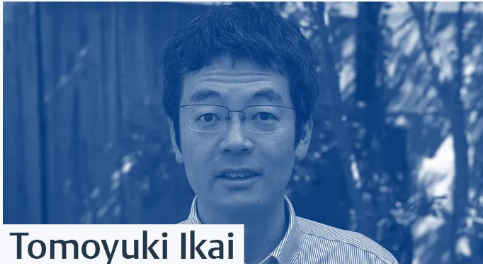


Thieme Cheminar #30
可溶性石墨烯纳米结构
Soluble Graphene Nanoarchitectures
在本次 Thieme Cheminar 中,我们将深入探讨可溶性石墨烯纳米结构的有机合成、表征和应用方面的最新研究进展。讨论将涵盖各种结构和创新功能,这些结构和功能正在推动这一动态领域的发展。
本期研讨会由日本冲绳科学技术大学院大学Akimitsu Narita教授主持。来自新加坡国立大学的Chunyan Chi教授、德国海德堡大学的Uwe Bunz教授以及日本国立名古屋大学的omoyuki Ikai教授将分享他们的最新研究。
# Chair

Professor Akimitsu Narita
日本冲绳科学技术大学院大学
Akimitsu Narita在日本横滨出生长大。他在东京大学获得化学学士和硕士学位,师从Eiichi Nakamura教授。随后,他加入了德国美因茨马克斯-普朗克聚合物研究所(MPIP)Klaus Müllen教授的研究小组,并于2014年获得美因茨约翰内斯-古腾堡大学化学博士学位。同年,他成为MPIP合成化学部的项目负责人。2018年,他作为助理教授(兼职)加入OIST,领导有机和碳纳米材料部门。自2020年起,他在OIST担任全职助理教授。
# Speaker 1
Molecular Carbons with Different Shapes and Sizes
具有不同形状和大小的分子碳

Professor Chunyan Chi
新加坡国立大学
Abstract
Thieme Cheminar
Carbon-based nanostructures have shown revolutionary influence in the area of chemistry, physics and materials science. Recent efforts have been focused on novel topological structures of sp2-carbons such as carbon nanohoops, nanobelts, molecular cages, and open-shell nanographenes, which provoked new chemistry and materials. However, synthesis of this kind of molecules is extremely challenging mainly due to strain or intrinsic high reactivity. Another issue is that most of these carbon nanostructures have a localized aromatic character; that means, the π-electrons are not globally delocalized along the backbone, which limits their optical and electronic properties and applications. Herein, the synthesis of a series of novel pi-structure with different shapes will be introduced, and their physical properties, aromaticity and diradical character will be discussed.
# Speaker 2
Stabilization of Acenes and Azaacenes
并苯和氮杂并苯的稳定化

Professor Uwe Bunz
德国海德堡大学
Abstract
Thieme Cheminar
In the past we have developed new synthetic apporaches to azapentacenes and azahexacenes, stabilized by TIPS-ethynyl groups. Now our focus has shifted into stabilizing very large (heptacene and beyond) acenes and azaacenes. This can be done for azaheptacenes and nonacenes by introducing four to six TIPS-ethynl groups on every other ring and reasonably stable species were isolated. To go beyond the nonacene limit, alternative methods of stabilization are needed. We converted pentacene-5,7,12,14-tetraone in two steps into a doubly bridged (2,2'''-substituted 1,1':4',1'':4'',1'''-quaterphenyl) pentacene, which is ca. 65 times more stable than TIPS-pen.
# Speaker 3
Control of Secondary Structure in Designed Ladder Polymers
设计梯形聚合物中二级结构的控制

Professor Tomoyuki Ikai
日本国立名古屋大学
Recent advancements in synthetic methodologies have greatly expanded the range of molecules and polymers accessible for chemists, increasing the potential for significant breakthroughs in materials science. Polymers with a molecular-level ladder structure, in which cyclic repeating units are interconnected by two or more chemical bonds, are referred to as ladder polymers.1 Due to their rigid backbone structures, ladder polymers display superior mechanical properties and thermal stability compared to conventional linear polymers linked by single chemical bonds. The severely restricted conformational freedom is also a defining characteristic of ladder polymers, offering a high degree of structural designability that allows precise control of the secondary structure in synthetic polymers. However, the synthesis of well-defined ladder polymers without branching or imperfect ladder formation remains a significant challenge for organic and polymer chemists. We have previously developed an efficient approach to ladder formation2 by modifying the acid-promoted alkyne benzannulations developed by Swager et al.3,4 This has led to the successful synthesis of ladder polymers with well-defined helical2,4–7 and coplanar2 geometries, free from detectable levels of structural defects, based on the appropriate design of chiral and achiral monomeric units. Recently, we designed and synthesized a series of helical ladders by incorporating pi-extended achiral spacer units as a third comonomer component, alongside the chiral and achiral units.8 This design allowed the modulation of the secondary structures with different helical handedness (P or M) and geometry (extended ribbon-like or loose coil helix) by replacing the achiral spacer units in the main chain while retaining the chiral monomer units. This talk will detail the design and synthesis of such chiral ladder architectures, highlighting their chiral functions, particularly with respect to circularly polarized luminescence and chiral recognition.
声明:化学加刊发或者转载此文只是出于传递、分享更多信息之目的,并不意味认同其观点或证实其描述。若有来源标注错误或侵犯了您的合法权益,请作者持权属证明与本网联系,我们将及时更正、删除,谢谢。 电话:18676881059,邮箱:gongjian@huaxuejia.cn